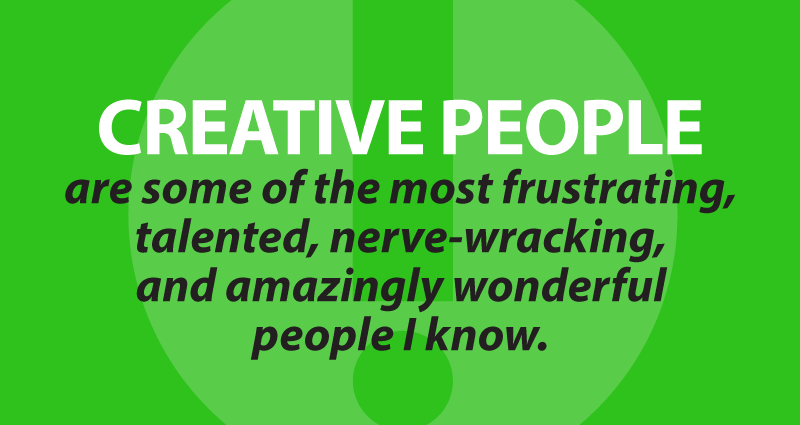
How to manage creatives without crushing them
Creative people are some of the most frustrating, talented, nerve-wracking, and amazingly wonderful people I know.
And I should know, having worked with, hired and managed a whole bunch of them over my career. So when a CEO recently asked me how I was able to get them to do such great work over so many years, I decided to share what has worked for me:
Spell out what you need to accomplish with every project.
Describe what results are desired, and the timeline needed. Make sure the goals are specific, but simple to understand. Then look at the people around you.
Take an inventory of individual skills.
Once you have a clear understanding of what each person brings, then you can assemble the right skills and talents for any project.
Organize by talent, not title.
You may find that your best team for a project is a combination you wouldn’t have thought of normally. Combine someone that is great at coming up with ideas with someone that can express it in words people immediately understand, add another that can visually make it pop, along with someone that can connect the dots through each and all of the different campaign elements. Now that’s a team.
Cater to strengths.
Knowing the ways in which people produce great work is as important as knowing what specific skill they can add to the team. Empower those that respond to a long leash, challenge those that respond to healthy competition.
Suggest – don’t impose – a process.
Realize that everyone has their own way of doing things, but be prepared to give feedback / make suggestions when they hit a logjam.
Make them change gears once in a while.
Assign everyone work on multiple projects so that no one gets stuck and ideas have a chance to incubate. Burnout is always a concern, so make sure they switch off occasionally in order to switch back on.
Roll up your sleeves and get your hands dirty.
Assign yourself to projects based upon your strengths, then lead by example. You’ll have a much better idea of what they go through every day.
Talk about their work and their future.
The only way to retain talent is to create an environment that they don’t want to leave. Ask them about their goals, and encourage the steps needed to reach them. Compliment them when they excel, and be prepared to tell them the truth when they don’t. It may be tough, but it’s always better than letting them stay stuck in a rut.
- Are you scared yet? - October 22, 2024
- OMG! Who really IS our competition?!? - September 24, 2024
- Do 5-star ratings really mean anything? - August 27, 2024
